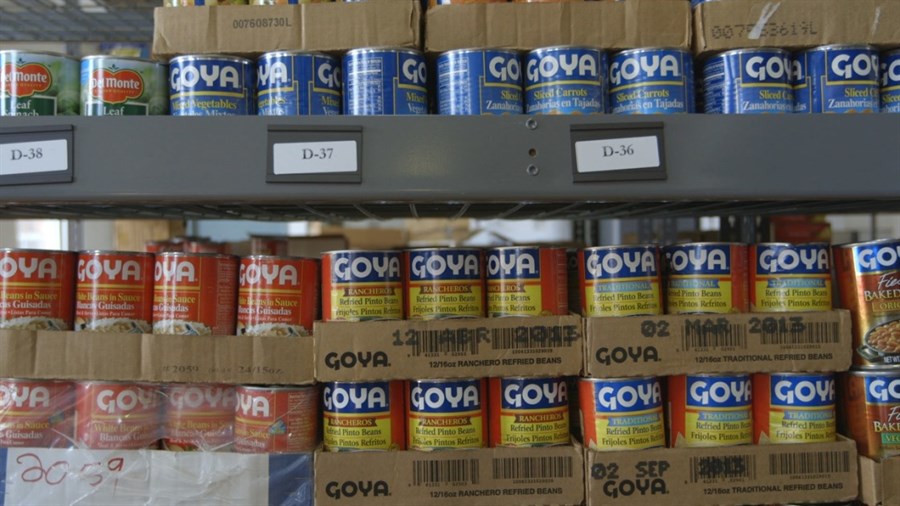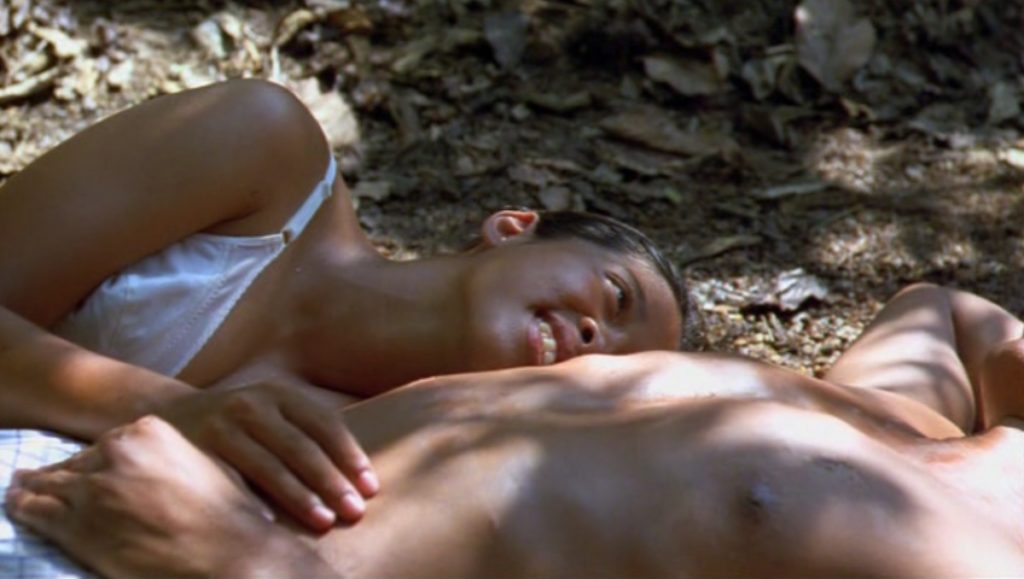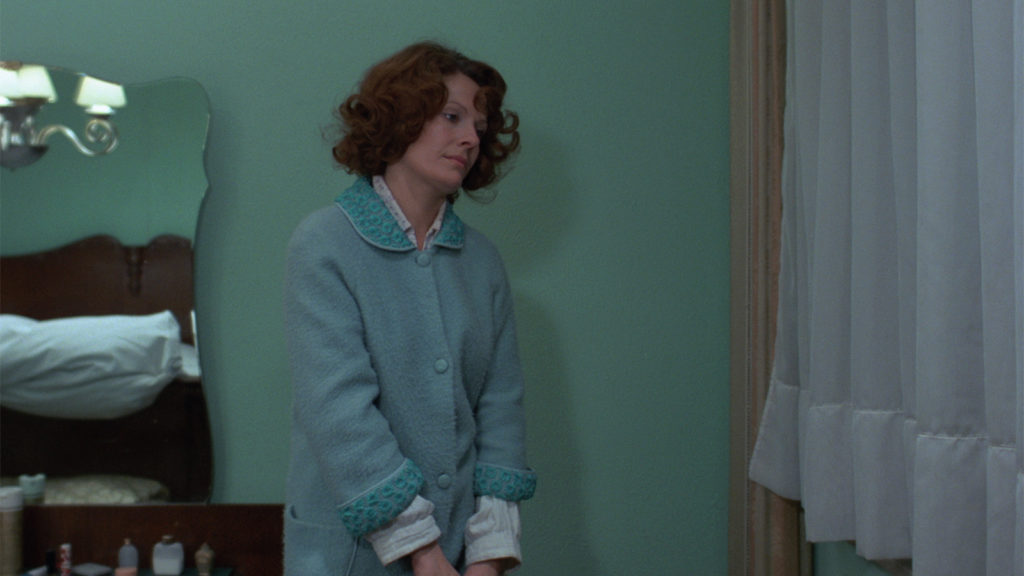
When it comes to invoking tropes of the “all-American,” the prison industrial system is not likely a signifier with which a nation extolling its virtues would wish to align. Such a connection, however, would accurately be upheld: with the highest incarceration rate in the world[i], invocations of the carceral within discussions of the United States reliably, if undesirably, hold weight. In the last decade alone, documentaries like 13th (2016), Solitary (2016), and Prison Town, USA (2007) have examined the American carceral state with sharp scrutiny, preparing relatively brutal exposés of the system’s various aspects at the intersections of racialization, economics, and social pathology. For filmmaker, writer and academic Brett Story, the aims of these efforts may be noble, but the means leave territory uncharted by design.
In her 2016 documentary The Prison in Twelve Landscapes, the director puts her focus on the manifestations of the prison outside of its walls, examining its modes of function without ever entering a facility. Story, who was completing doctorate studies in geography at the time of production, took interest in the proximal inaccessibility of prisons in both the geographical and public imaginary senses.
Story acts as silent cartographer, mapping the impact of the prison industrial complex onto American society and leaving new understandings of criminality, punishment, policing, and economics without employing a hardened didacticism.
In her documentary, she and director of photography Maya Bankovic fuse lush, lyrical imagery and a meditative pace to create a haunting examination of the prison system’s imprint on free society that is slow-moving but never idle. Story acts as silent cartographer, mapping the impact of the prison industrial complex onto American society and leaving new understandings of criminality, punishment, policing, and economics without employing a hardened didacticism. The Prison in Twelve Landscapes thus activates aesthetics of nonviolence in an ingenuity-filled approach to mapping the patterns of a most insidious institutional violence over the collective landscape of America.

Story’s documentary uses an associative structure piecing together twelve vignettes taking place in different American towns and cities, each section detailing a different aspect of civilian life in the carceral state. In Detroit, a brash and obnoxious executive gives a tour of the massive Quicken Loans company grounds, dressing hollow-isms in gold as he speaks of the corporate culture and valorizing the neoliberal growth and gentrification that have both enabled and accompanied business success while displacing less wealthy populations and criminalizing their presence. A segment in Marin County, California on prison firefighters opens with idyllic billowing clouds of smoke; staggering stock footage of a forest ablaze takes over the screen and a voiceover actor delivers an account of the bittersweet heroism of the work in a prideful, rhythmic cadence. Another segment lands us in a warehouse in the Bronx owned by a man who has made a living providing a full-cycle shipping solution for prison facility-inbound goods; the owner reads off the requirements mechanically in voiceover while still shots of neatly-piled packaged underwear and stacks of canned beans cycle in and out of view like inelegant tableaux.
The film deliberately removes crime and punishment as focal points of the prison system, if not problematizing their status as associated concepts altogether. Story–who aptly describes herself as a “geographer of the US prison system”[ii]–quietly assembles a blueprint of the modes of operation underpinning the existing system piece by piece, lending visual sentiment to the words and stories of her subjects. In her own words, the sense that “[p]rison itself invites an associative structure of vignettes”[iii] becomes evident. That which is depicted is evidence of an economic tool sustained by the targeted exclusion, dehumanization, and criminalization of citizens, primarily poor and racialized. What we witness is business as usual, and it’s booming.
At the heart of the work is the calling-into-question of what we think we already know about prisons. It’s this inquisitive approach that brought Story to make the film and that she chooses to relay outward[iv]. Within her modest patchwork, troubling contradictions float to the surface of viewer consciousness: the way the wellbeing of those requiring the business of prisons to sustain their local economies is drawn up inextricably with the targeting and hyper-policing of certain populations; the blunt irony of the reality that most of the prison firefighters would be barred from taking up the profession post-release.

The usual prison imagery featuring order, clinicism, and banality is swapped out in favour of the tranquil, natural waywardness of rolling hills and city parks bustling with children and greenery. Here, there are no racialized bodies in orange suits herded over concrete courts to be found; in fact, Story’s direction avoids any visual shock or sensationalism almost completely. The film opens with disembodied voices over shadowy scenes of night-time highway traffic. As we slowly begin to realize the voices belong to callers from the outside speaking to their incarcerated loved ones, the visual arrangement seems to mimic the way the systemic forces at play operate swiftly and quietly, often undetected. Thus begins Story’s pattern of taking a gentle, inquisitive, piecemeal look at a monolithic and violent institutional tradition. The filmmaking feels responsive, rather than prescriptive, to the situation at hand in each vignette, letting the nature of each situation unravel on its own and allowing the viewer to arrive anew at an altered understanding of how the carceral state presents in free society. The freewheeling nature of the reveal does not suggest that Story’s filmmaking isn’t deliberate or skilled in nature. Rather, it demonstrates an attendant practice imbued with extreme compassion.
Story’s direction brings into view the obscured mechanics of the system in such a way that each insight feels like a discovery rather than a dogmatic teaching; though it remains accessible, the film feels intellectually laborious. So when the last vignette transports us to the entrance of Attica Correctional Facility, the final shot of the building’s façade feels clumsy and almost deflating, the opposite of hard-earned and startlingly anachronous to the prevailing ethos of the film. Perhaps Story might have had a more impactful ending had she left us with images of patrons filing into a makeshift court in St. Louis County, Missouri to pay fines on a variety of unfairly-levelled tickets, or footage of a pointed discussion between two women in line for the prison visitors’ bus on the capitalistic mechanisms brokering lines of communication between each one and her incarcerated loved ones. But the decision to display the prison’s majestic architecture as the final image, rather than fixate on the Black and brown bodies featured elsewhere, alternatively strikes as a gesture of responsible filmmaking: it seems, almost, like a deliberate act to maintain respectful distance between the affected populations and the viewer, who might otherwise default to an infantilizing, white patriarchal gaze. The sequence removes the focus from the vulnerability of the communities on screen while literally redirecting focus on the institution. Story’s last sequence brings us down from a jarring emotional hum and redelivers us to a space of calm rationality which feels less emotionally manipulative than focusing on the vulnerable, often racialized bodies in view.
In some of the earliest theorizing on the essay film as a genre, German artist and director Hans Richter famously spoke of its capacity to “render visible what is not visible,” while Nora M. Alter and Timothy Corrigan, writing almost 80 years later, suggest that the essay film provides “an oblique cinematic encounter with everyday realities”[v]. With The Prison in Twelve Landscapes, these sentiments could not ring truer: Story exhibits fine control in piecing together (not so) disparate elements and grafting onto them a powerful narrative cohesion with mastery. Present, also, is a strong connection with the Third Cinema-adjacent possibilities of the essay film proposed by Fernando Solanas and Octavio Getino in 1969[vi], lauding its potential to provide “discovery through transformation.” Though the film’s tone feels observational, its form is classically persuasive.

Taking Prison in Twelve as an essay film, Story is its ghost author: she elects to make her own presence nearly imperceptible, abandoning director voiceover completely and trusting in the narrative fidelity of her subjects and landscapes. Though interviews and personal accounts are critical to the film, Story is more likely to favour disembodied voices over traditional talking heads, often superimposing the words of her interviewees over poetically shot though reliable images of the environments they speak of and inhabit. Her directorial gaze coerces the viewer to regard the stories as facts of the matter alongside the images, and respect her interviewees as subject matter experts, an additional indicator of her compassionate approach. This fusion of elements foregrounds the film’s cobbled-together nature, in the likeness of reality: it’s less concrete than it may appear and more an amalgamation of subjective truths. If the film doesn’t prompt a reordering of our ideas of authorial and authoritarian sources, it at least opens up the psychic space for such transformation.
This approach begs the question of how we can reconcile the docility and, often, downright beauty in the images Story serves us with the utter repugnance of the realities of the carceral state. It would seem that the unilateral violence inherent in the system demands an equally brutal counterforce to stage a proper takedown. Prison in Twelve begins with discordantly lulling images that seem innocuous enough, but its rendering of cruelty steadily mounts into something blunter, more immediately charged. By the time we get to the makeshift courts in St. Louis County and scenes from front lines of the protest against Freddie Gray’s death in Baltimore, the injustice articulated feels achingly unbearable. The images of active resistance feel, at once, justified and discomfiting: though arguably vital here, expressions of Black anger through the eyes of a white filmmaker may well always feel tenuous to a Black viewer. Story seems to anticipate the potential for harmful, racist reading of these images and rises to the counter yet again with care and compassion, having contextualized considerably by this point so that these loaded displays remain resistant to flattening and caricature.
Taken in full, Story’s filmmaking does not commit to counterviolence, and perhaps even defies the idea that violence is an adequate transformative force. With certainty, the documentary is injurious insofar as a viewer’s existing ideas about the function of prisons cannot remain intact upon viewing, but Story’s filmic methods largely deny cruelty, assault, and bombasticism as tools of choice. The injury Story stages lacks the “precision, sharpness, [and] rigor” that, as cultural critic Maggie Nelson has observed in depth[vii], so often accompany displays of cruelty. Story deflates the legitimacy of the prison industrial system not with head-on antagonism that ruptures it violently, but with measured and immensely moving presentations of counternarratives that feel utterly undeniable.
By avoiding direct representations of the prison and eschewing brutalizing imagery, The Prison in Twelve Landscapes coolly makes its case.
By avoiding direct representations of the prison and eschewing brutalizing imagery, The Prison in Twelve Landscapes coolly makes its case. Further, the compact nature of the “landscape” or vignette is cleverly mobilized as an ordering principle through which we can attempt to make sense of the chaotic, sprawling phenomenon of prison industrial complex system by examining it in smaller, more easily digestible bits.
It would be irresponsible to ignore the way the rhetoric of calmness and rationality opens up space for a certain kind of quality judgment on respectability, if not outright tone policing. In assessing Story’s documentary, we should also hold in mind her identity and the ways in which whiteness, femininity, and Canadian citizenship undoubtedly aid her and Bankovic in gaining access[viii] to highly secure spaces, classified information, and related narratives alongside their filmmaking methods; we might consider, for example, what would have come of the Quicken Loans segment had it been under the helm of a young Black man native to Detroit. When we think about what, or who, sources of truth and validity look like, it seems good practice to think about what it means for Story to be the one to assemble and oversee this story’s telling over folks from more directly impacted communities. Such considerations, however, aren’t likely to detract from a film as critically considered and judiciously constructed as Story’s: where The Prison in Twelve Landscapes charts new ground, it treads carefully.





